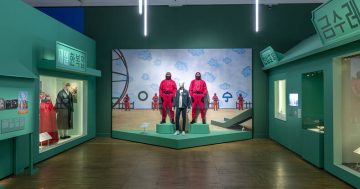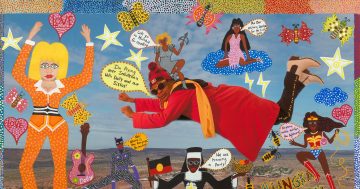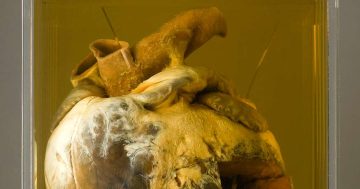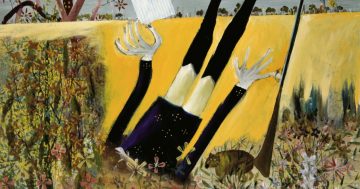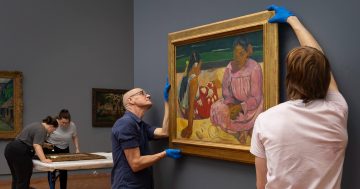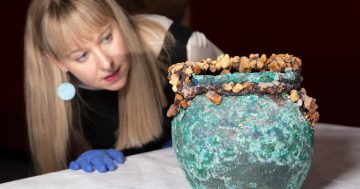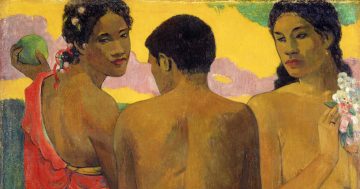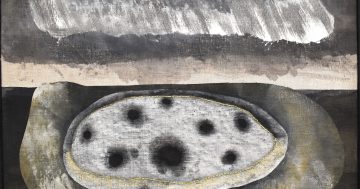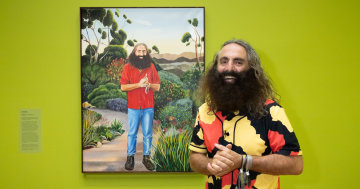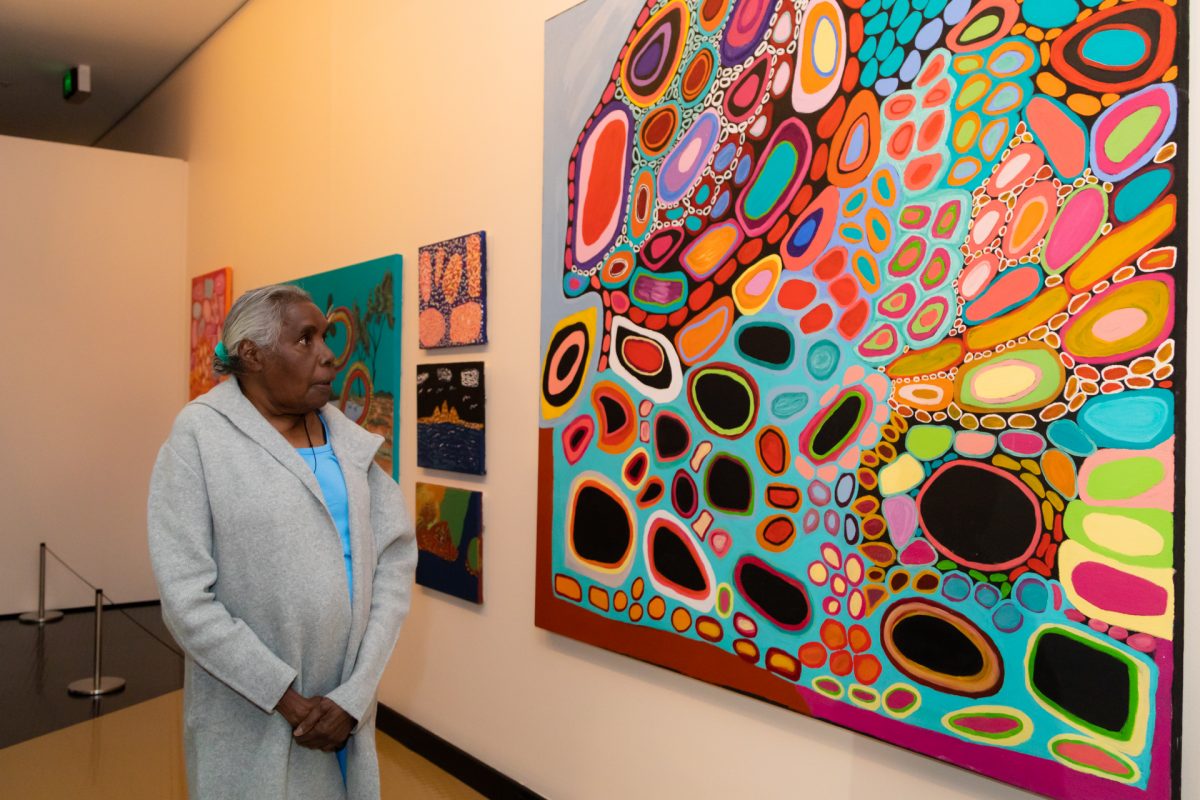
Mornington Island artist Dorothy Gabori in front of her vibrant work, Our Mother’s and Grandmother’s Country, which she painted with her sister Amanda. It is one of the works in the National Museum of Australia’s new exhibition, Belonging. Photo: Michele Kroll.
When Dorothy Gabori saw her work hanging in the National Museum of Australia she felt it had come “home”.
She’d never been to the Canberra museum before from her Country on Mornington Island but she felt the work, Our Mother’s and Grandmother’s Country 2019 immediately “belonged”.
It was painted with her sister Amanda. The Lardil women are the daughters of renowned First Nations artist Mirdidingkingathi Juwarnda (Sally Gabori). Their Country is in the south of the Gulf of Carpentaria where the Lardil people are the traditional owners. The island is also home to groups from neighbouring islands and the mainland who were forcibly removed by missionaries.
“Our mother was taken away from her Country,” Dorothy said, “but she never lost her creative roots. She was a very strong woman.
“She didn’t talk any English but we understood what she said … especially when she sang her lullaby songs. They were very sad.
“There were 11 of us siblings,” Dorothy said, “all of us artists. But there’s only four of us left now.
“But her art is bright and light, just like the land she was born in – Mirdidingki, on the south side of Bentinck Island.
“We paint her Country, where the big lake is.”
Today, the sisters’ Country is a vibrant artistic community with a strong history of performance and visual art and craft.
The women’s work takes pride of place in the National Museum of Australia’s latest exhibition, Belonging: Stories from Far North Queensland. It is the first iteration of a vast new acquisition of Indigenous art – 415 artworks by 103 artists working in 11 art centres across the country.
In Belonging, the first tranche – 120 paintings, photographs, digital art and artworks – have just gone on display in the museum’s Focus Gallery.
Communities represented include Bana Yirriji Art, Girringun Aboriginal Art Centre, Hopevale Arts and Cultural Centre, Mornington Island Art, Pormpuraaw Art and Culture Centre, Wik and Kugu Art Centre, Yalanji Arts, Yarrabah Arts Centre, Wei’Num Arts, Badu Art Centre and Moa Arts. The centres worked with the Indigenous Art Centre Alliance (IACA) to make it all happen.
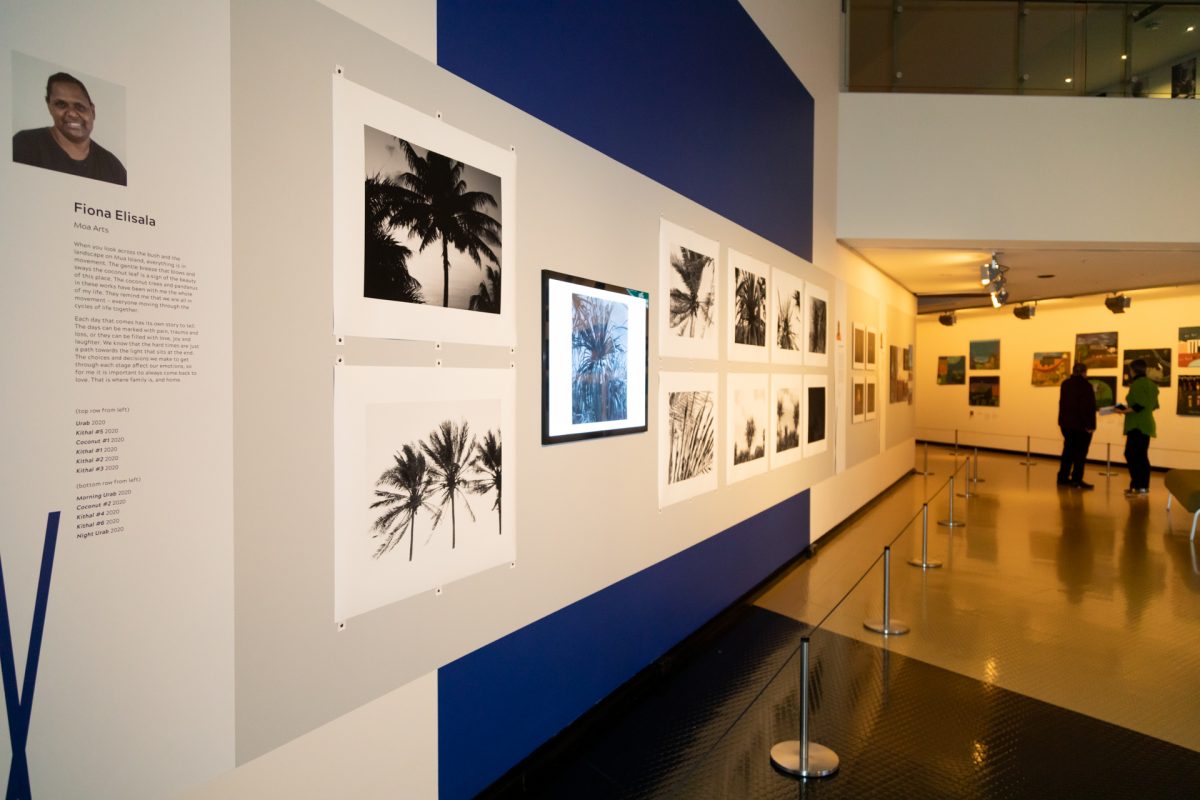
The National Museum of Australia’s new exhibition, Belonging, showcasing the works of First Nations artists, is now open in the Focus Gallery. Photo: Michelle Kroll.
The plan was to experiment with new painting techniques and materials to create artworks that best represented the vibrant and innovative creativity of First Nations artists and explore the idea of what it means to belong.
National Museum of Australia director, Dr Mathew Trinca, said when the IACA first presented the Belonging collection in 2019, he was immediately struck by the “power” of the artworks.
“They glow with creativity, reflecting the freshness and vitality of the artists’ diverse styles,” he said.
“Rather than picking out individual pieces, we saw the richness in the entire collection and the potential to bring these stories to all of Australia and the world,” he said.
National Museum curator Shona Coyne described the Belonging collection as “so much more than beautiful art; it describes a way of life.
“Each painting, image and sculpture takes you to Country and shows you what it feels like to belong in Far North Queensland,” she said.
“The collection highlights the importance of Indigenous art centres which are often the heartbeat in the life of remote and regional communities.
“The Belonging project encouraged artists to experiment, creating exciting new works using new media such as earth and dry pigments, fluorescent paints, digital film and photography. The results were immediate; art centres were reinvigorated and new styles emerged.”
Pam Bigelow from IACA, who worked closely with the art centres to set up the project, said Belonging was an ideal opportunity for member artists to gain a national profile and boost their careers.
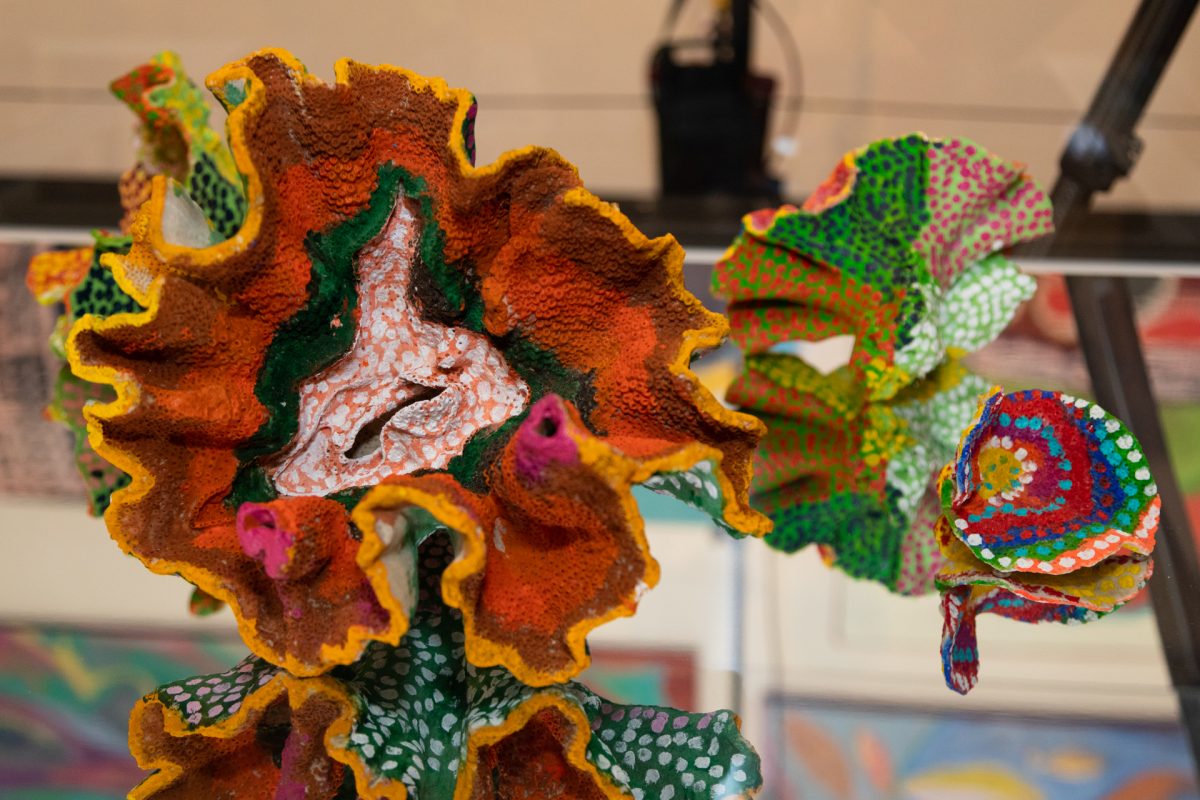
The new Belonging exhibition at the National Museum of Australia features works of art from First Nations craftspeople from North Queensland and the Torres Strait. Photo: Michele Kroll.
Since 2012, IACA has advocated for First Nations arts centres in Far North Queensland and the Torres Strait, partnering with the National Museum to make this exhibition happen.
“Art centres in central, western and the top end of Australia have been known for so long,” she said. “We are trying to even that up and have our artists seen.
“Our art centres had to advocate hard to get a peak body to represent them, so this project is a major milestone.”
Works from the other northern arts centres will feature in exhibitions at the National Museum in 2023 and 2024.
Belonging: Stories from Far North Queensland is now showing in the National Museum of Australia’s Focus Gallery until 12 February, 2023. Free exhibition. Open daily.
Original Article published by Sally Hopman on Riotact.


